In many ways, Lewis Ashfield Kimberly’s career in the US Navy followed an ideal trajectory. Born in Troy, New York, in 1830, he received an appointment as a midshipman in 1846. After serving in various ships on the coast of Africa, the West Indies, and the Mediterranean, Kimberly was promoted to lieutenant in 1855.
The Civil War accelerated his career. He served as Farragut’s executive officer on board the far-famed Hartford during the Battle of Mobile Bay, and in 1866 received his promotion to commander. In 1871 he commanded the landing forces that captured and dismantled a number of Korean forts after they fired on American warships.
Promoted to rear admiral in 1887, he served as commander-in-chief of the US Pacific Squadron. He gained his widest fame during the so-called Samoan crisis of 1889. The United States, Germany, and Great Britain all vied for control of the Samoan Islands. The three nations had sent warships to monitor the situation, and a tense standoff ensued. Mother Nature, however, cares little for the ambitions of nations, and on March 15, 1889 a powerful typhoon struck Apia harbor. All six ships at anchor were driven ashore and seriously damaged or destroyed. During the height of the storm, Kimberly’s ship, the USS Trenton, dragged her anchors. As the storm and the coral reefs threatened to sink her, Kimberly said, “If we have to go down, let us do so with our flag flying.”
After his return from the Pacific, Kimberly assumed a desk job. He retired in 1892 and died at his home in West Newton, Massachusetts in 1902.
In 2008 the Museum acquired a sketchbook created by Kimberly when he was a young officer. It appears to have been executed when he served on board USS Dale and USS Germantown between about 1856 and 1860.
Photographs taken later in life show him as a typical late-Victorian naval officer, looking heavily mustachioed and severe, but his journal reveals something else about the man: he had a creative, artistic, and at times bizarre inner life.
The book contains a few doodles and scribblings, but most of the pages are covered in well-drawn ink, watercolor, or pencil compositions. There are some fierce caricatures (unidentified, sadly), fantastical architectural renderings, decorative borders, shipboard scenes, and other works that defy categorization. The following selections are just a sampling of what Kimberly’s fertile mind produced.
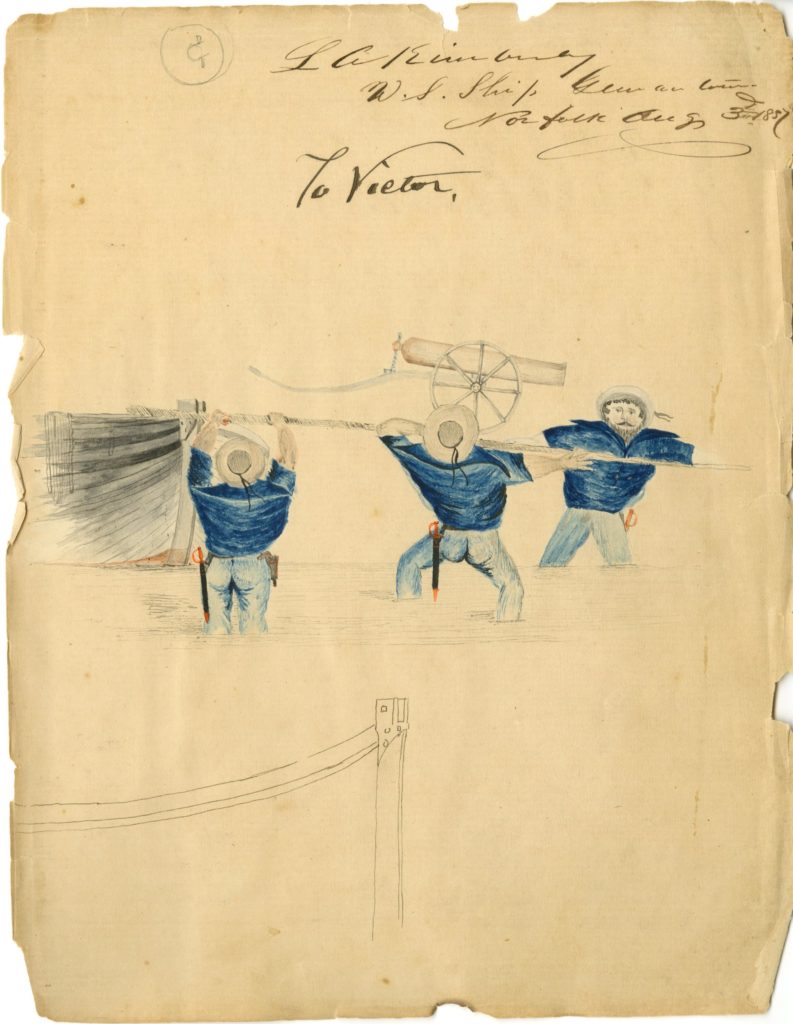
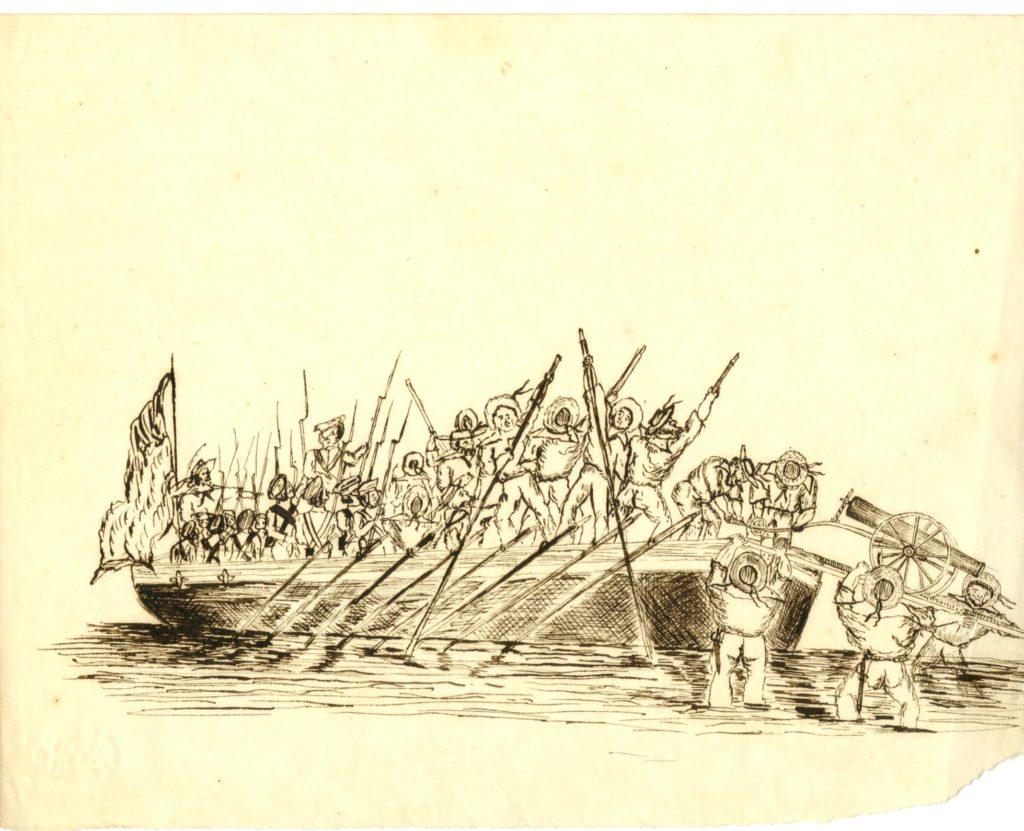
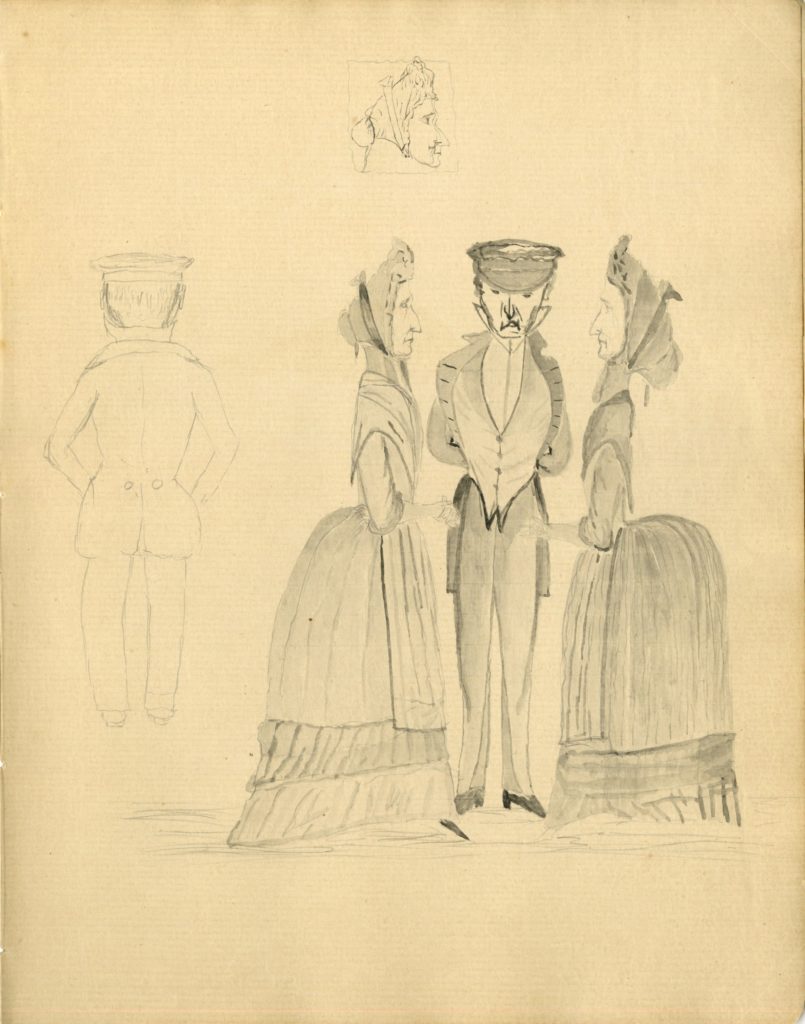
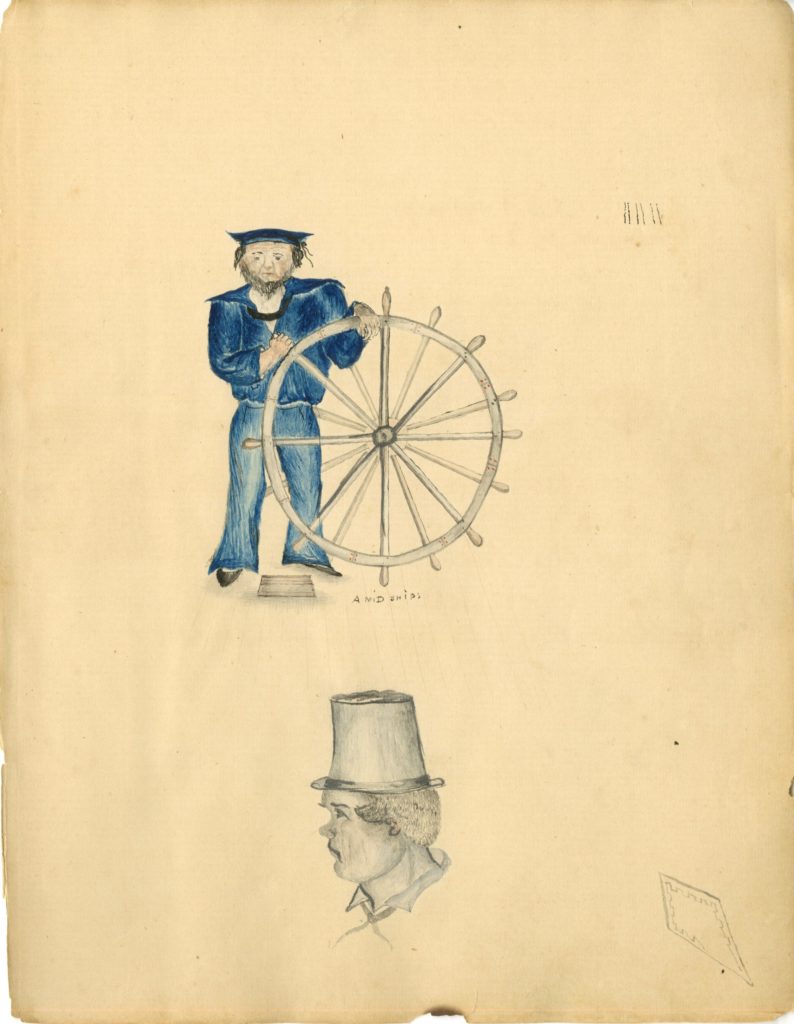
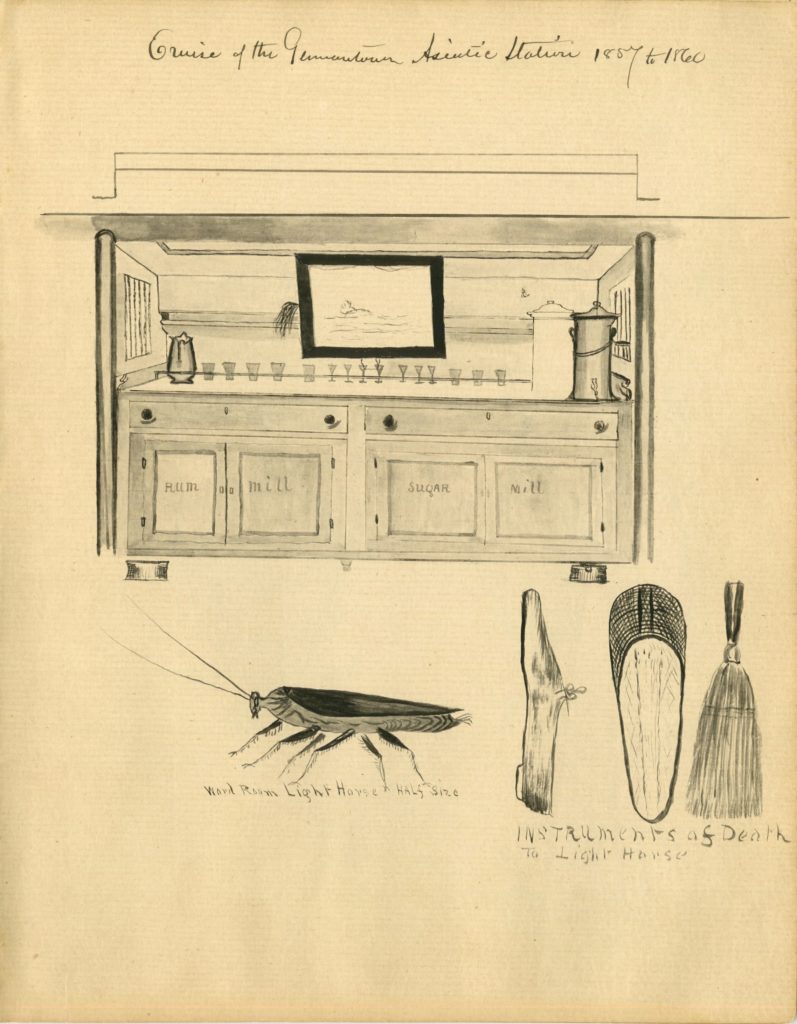
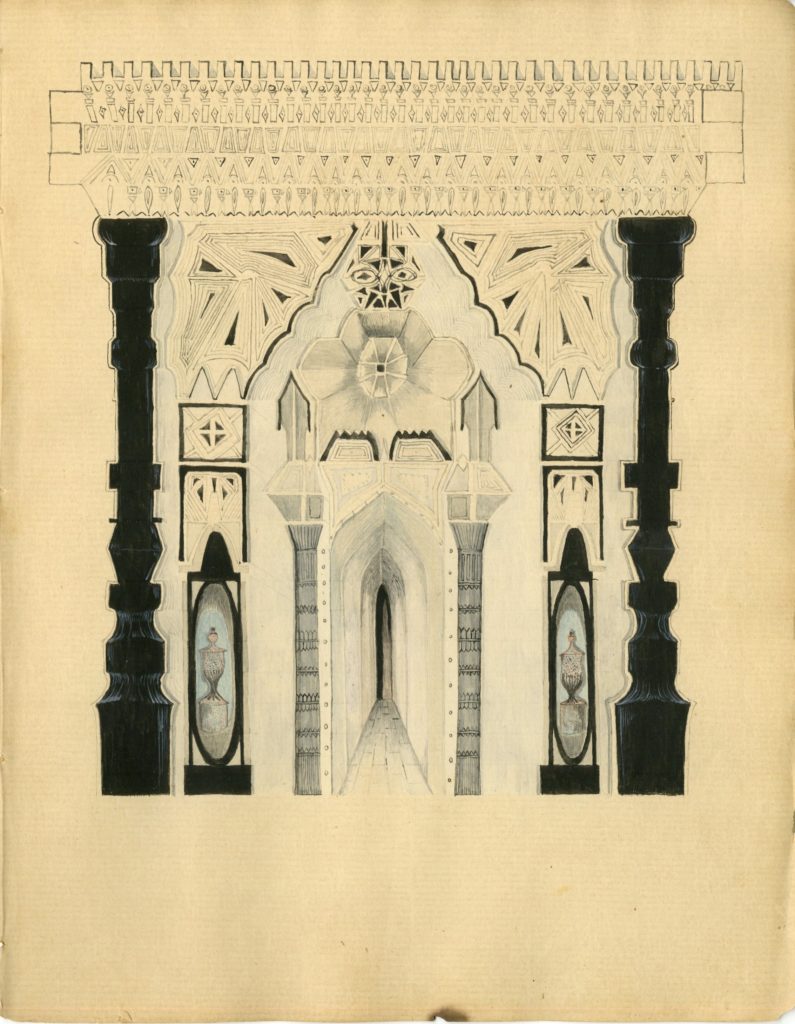
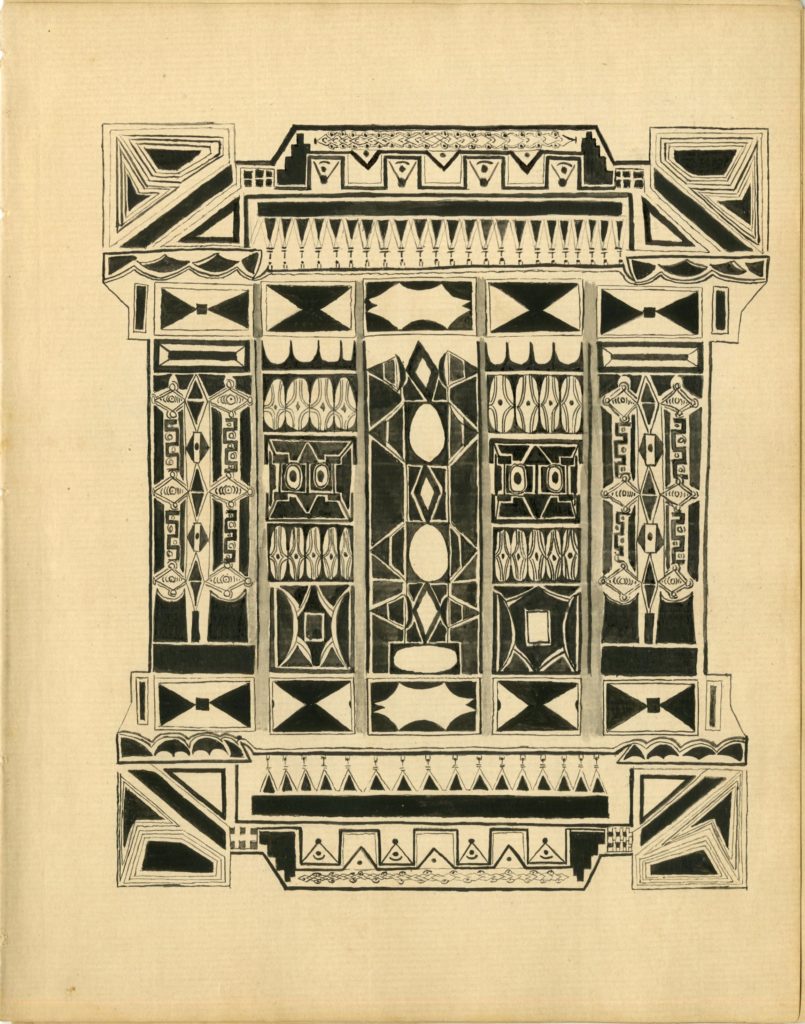
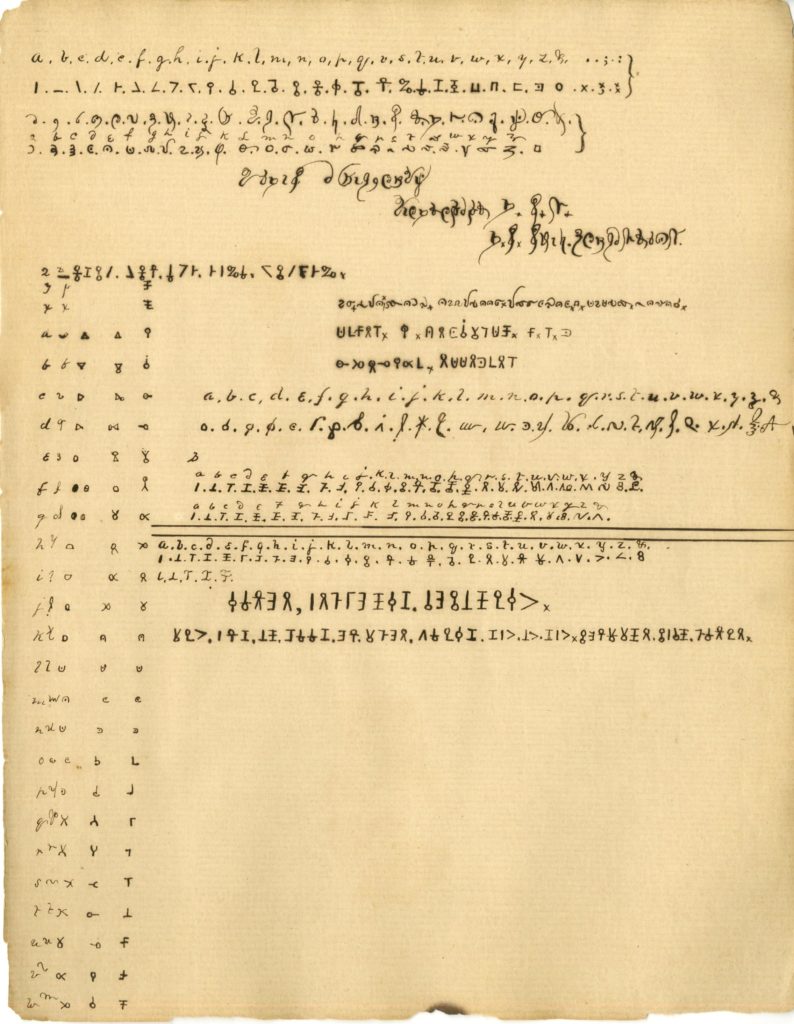
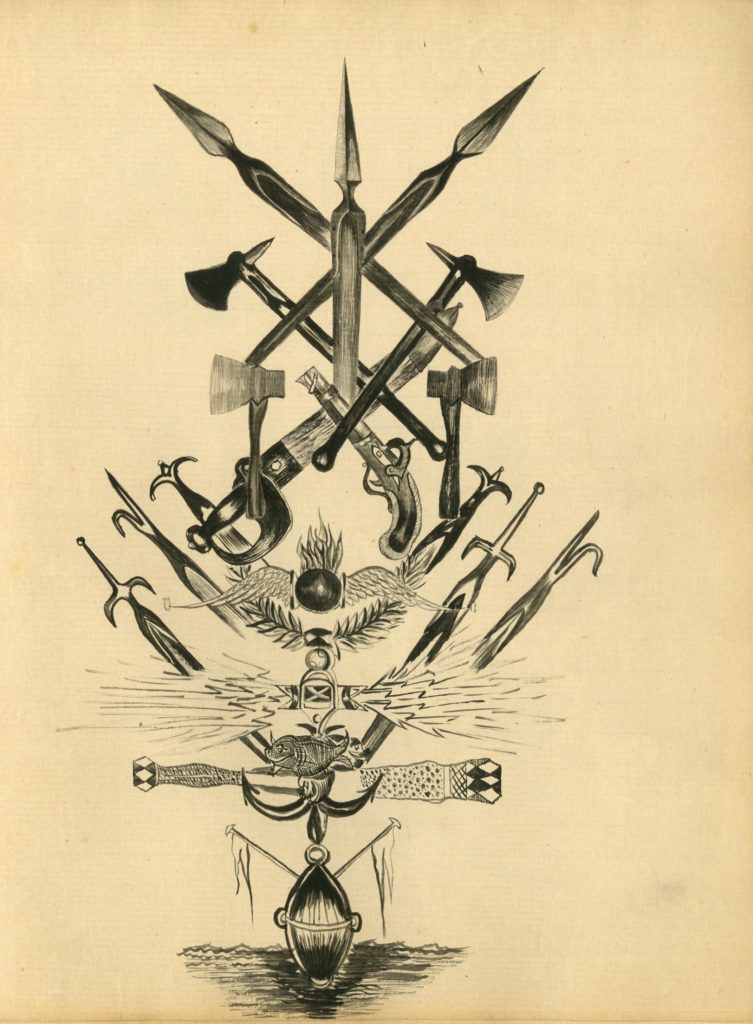
The Author(s)
Matthew Brenckle
Research Historian, USS Constitution Museum
Matthew Brenckle was the Research Historian at the USS Constitution Museum from 2006 to 2016.
